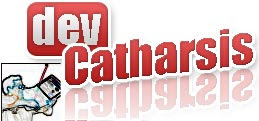Though it was written in February, I'm still talking about this great article from Beat Schwegler , so I've decided to recover the subject.
The article is: Why Restaurants aren’t run by the Software Industry, and boy, did Beat chose the right way to express the problems we have in our industry (our should I say, our craftsman).
Beat invites us to imagine the experience of a dinner in a restaurant that is run by the methods and principles of software development, in an hilarious scenario that is guaranteed to make you rethink our methodologies.
In the end, he comes with some interesting points that may help our industry to better understand how we can become more efficient:
- To deliver on the highest level of quality, you need to be specialized. Not only are most restaurants categorized (Thai, seafood) but the smaller the menu, the more likely the ingredients are fresh (freshness increases the quality).
- To create a dish fast and on the highest level of quality you are required to focus on a small number of dishes. This allows you to think about the streamlining of the preparation and you’re able to prepare the different “building blocks” in advance.
- To avoid misinterpretation provide your guests with a menu. Also be aware that they might be unknowledgeable of the domain specific expressions such as “Pommes Dauphine”.
- To deliver on time, planning and preparation is essential. When the chef is planning a new dish, he is not only thinking about the recipe but also about the way he can streamline its creation. What are the “building blocks” that need to be prepared upfront (such as the stock), what is the stuff that will be prepared before the restaurant opens (such as cutting onions or herbs), what are the required tools (e.g. steamer)… For a restaurant, a successful dish doesn’t only require a great recipe but also clear descriptions of the requirements, different building blocks, tools and a process that describes how to cook a meal on a consistent level of quality.
- Prices are based on a transparent calculation based on the cost for ingredients and the time needed to prepare that dish.
Uau, isn't just great when complex problems are made simple to understand?


No comments:
Post a Comment